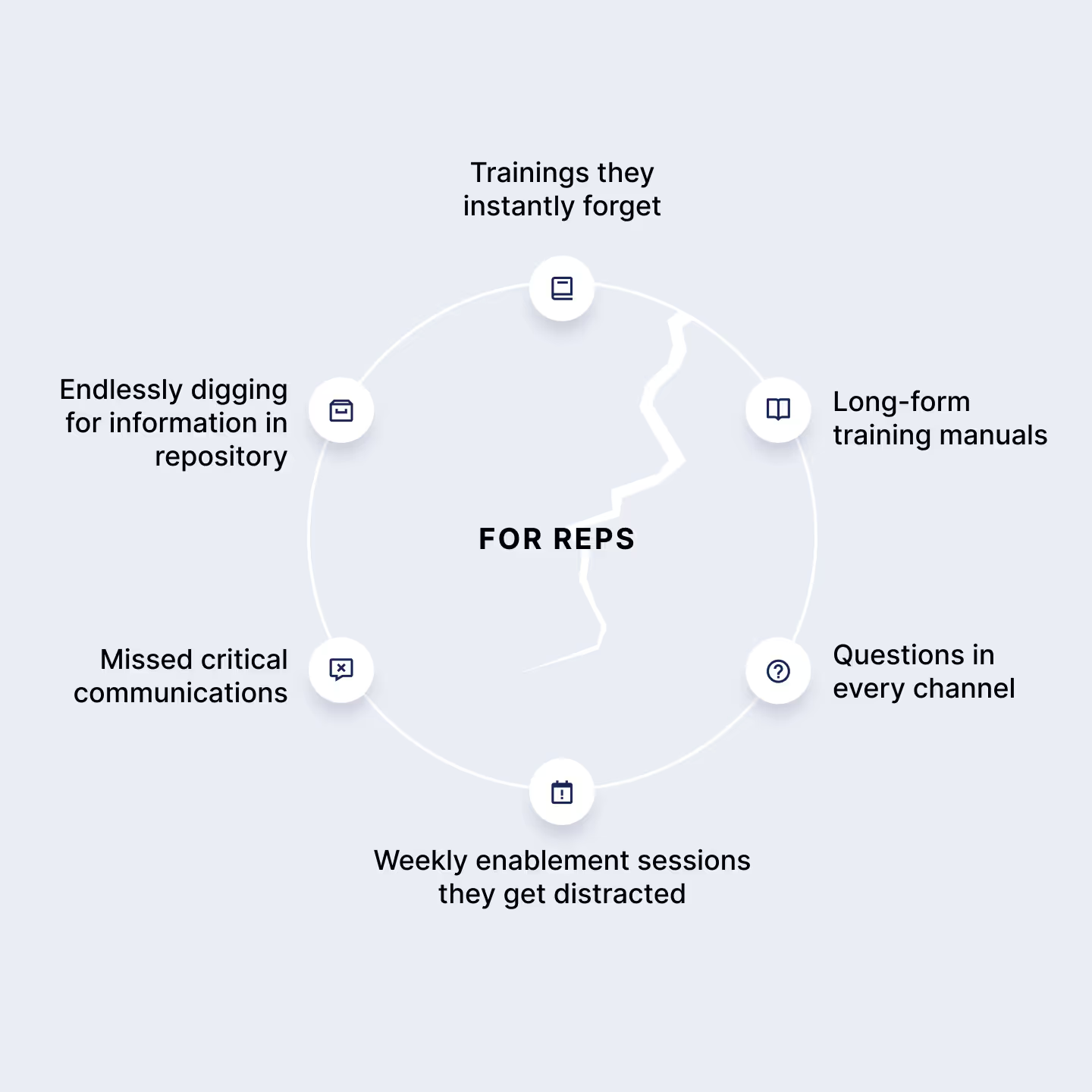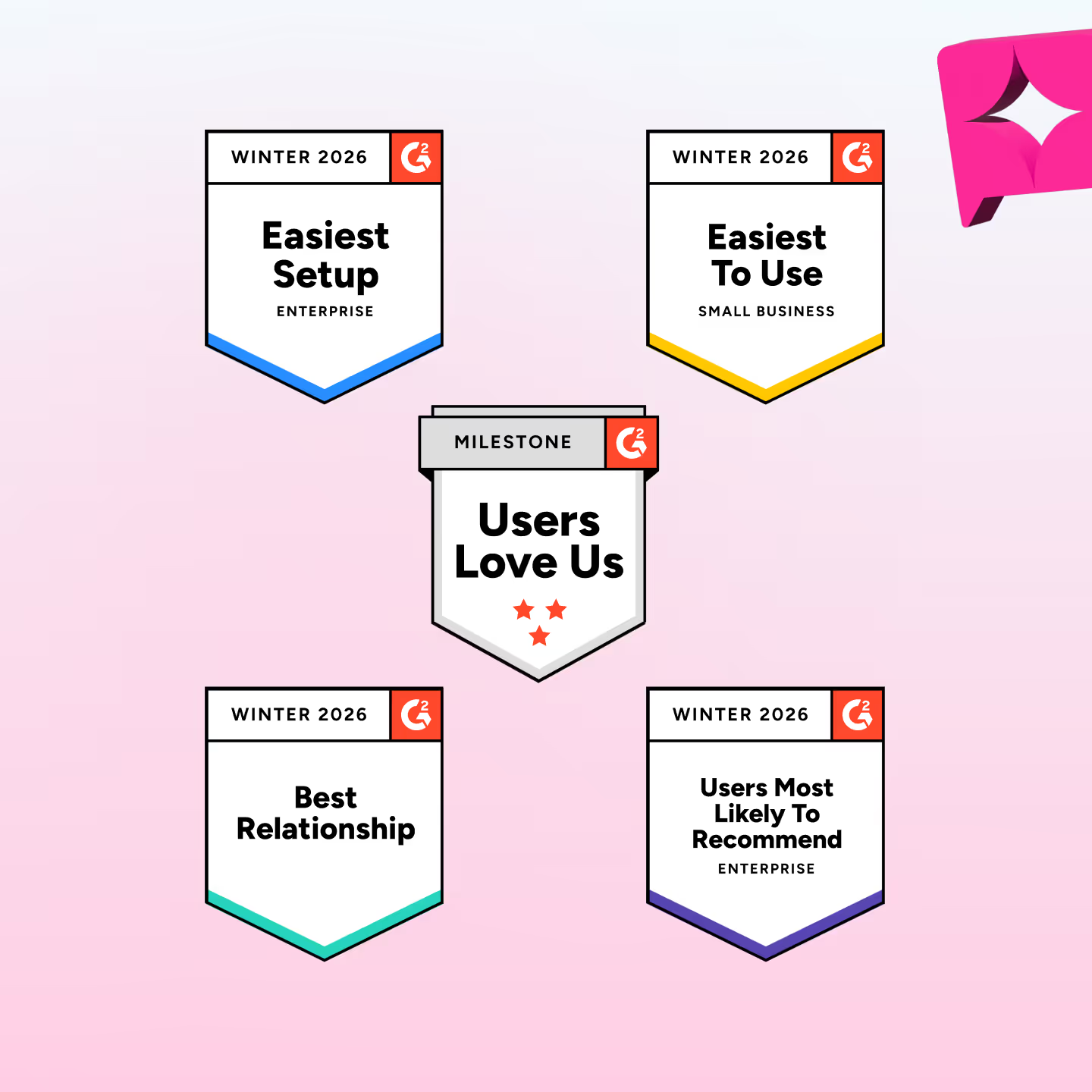Welcome to the change economy
In today's hyper-competitive market, where products and market conditions change daily, companies can't afford to stand still - speed of adoption and execution determines success.

Traditional enablement wasn't built for this pace
Static playbooks. Tab overload. Hours of training reps won’t remember. Today’s teams need enablement that moves at the speed of their workflow.

Meet Just-in-Time Enablement
Just-in-Time Enablement brings learning into the flow of work so reps know what to say, do, or share the exact moment they need it. No searching. No switching tabs. No wasted time.


What is just-in-time enablement?
The various methods for integrating learning and Enablement in the Flow of WorkTM, ensuring reps know what they need to know, when and where they need to know it.

Just-in-Time Enablement use cases
Just-in-time process guidance
Guide reps step-by-step through any process or workflow, ensuring adherence to best practices without ever leaving their active task.
Just-in-time knowledge
Deliver instant answers and information to reps in the moment they need it, preventing time-consuming searches and ensuring they always have answers at their fingertips.
Just-in-time sales content
Equip reps with the perfect sales collateral and marketing materials at the precise moment they need to engage a buyer or move a deal forward, without disrupting their workflow.
Just-in-time sales coaching
Provide real-time, actionable feedback and guidance to reps, helping them master critical sales skills and improve performance based on insights from their sales tools.

How does it solve sales rep challenges?
To build pipeline and win deals, reps need to understand more, faster. Traditional systems and workflows aren’t built for this new pace.
Clunky content repositories keep reps from quickly finding what they need—so they give up.
Critical communications are missed by reps drowning in information overload.
Reps can’t search for what they don’t remember—so they use what they shouldn’t.
Reps demand instant, real-time enablement
Contexual access
Works anywhere. It meets them in the moment of need in any tool with real-time contextual learning and content.
Personalized assistance
Understands what they're doing and what they need. Automatically recommends the right content for that precise moment and that exact deal.
Simple, yet Spektacular experience
Seamlessly syncs and centralizes your content. AI generates and automatically delivers content. Insights prove real business impact.


Just-in-time is the answer
Faster sales cycles, dramatically decreased ramp times, promotions, and more. Meet the teams embracing the future of enablement.

How does it solve enablement & marketing challenges?
Managing content is a full-time burden for enablement and marketing teams, bogging them down with manual work and leaving little bandwidth for strategic initiatives.
Content systems are heavy and complicated, making it impossible to maintain and manage up-to-date content.
Content creation teams lack a single source of truth to identify gaps and make data driven decisions.
Constant changes leave sales reps and enablement teams perpetually lagging behind.
GTM leaders need a scalable platform that moves at the pace of their business
Unified platform
Works anywhere. It meets them in the moment of need in any tool with real-time contextual learning and content.
Dynamic content
Understands what they're doing and what they need. Automatically recommends the right content for that precise moment and that exact deal.
Measurable insights
Seamlessly syncs and centralizes your content. AI generates and automatically delivers content. Insights prove real business impact.



We wrote the book on Just-in-Time, literally
Melanie Fellay, Spekit’s CEO and co-founder, wrote Just-in-Time: Enablement in a World of AI to share what today’s enablement leaders actually need: a clear framework, real stories, and practical strategies for helping teams perform in a world that’s constantly shifting.
See how teams are stepping in the future with Spekit
Give reps instant, real-time, personalized access to the information they need to win in critical moments - without leaving the page they're on.

